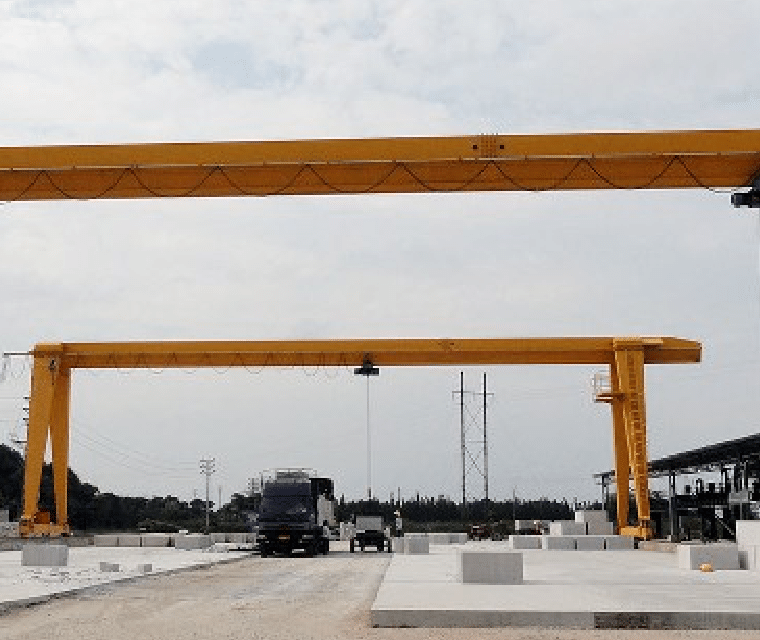In different factory setting, Electrical Chain Hoists really are a must-have. Ideal for providing vertical lifts, electric chain hoists are quite obvious and easy to use. This may cause them a nice-looking selection for businesses.

However, precisely what is not too easy may be the task of selecting the correct hoist to meet your needs. The market industry is currently flooded having a large numbers of products, several of which are subpar offerings. Effortlessly manufacturers claiming the superior spot, it may become difficult to select the right choice.
This is exactly why, to make certain that you don't go overboard, we've gone ahead and compiled this entire guide to choosing electric chain hoists to use. Once you glance at the guide below, you'll have little difficulty understanding which product you need to purchase.
But let's start from the outset and make things right on which an electrical Chain Hoist is.
Precisely what is a power Chain Hoist?
Put simply, a power chain hoist is often a device that's employed for vertically lifting and lowering any materials. The hoist includes an auto using a brake, Gearbox, Load Chain wheel and a controller, that are employed to control the motions with the system. The lifting element used could be the Alloy Steel Chain.
These kinds of hoists are ideal in factories and machine shops, which require fast lifting and loading of products.
A few when selecting Electric Chain Hoists
Selecting the most appropriate chain hoist is amongst the essential prerequisites for the safe and efficient workshop environment. Listed here are many of the main reasons that really must be taken into account when scouting for the proper product.
The body weight with the load: This is actually the first and most important aspect you'll want to consider when choosing electric chain hoists. The stress you will be lifting determines the sort of hoist that you need to buy. As a general rule of thumb, at under ten a great deal of lifting capacity, a chain hoist is preferred. However, for lifting greater weights, an electric wire hoist is acceptable. However this doesn't hold with high lifting height. So, based on your industry requirements and needs, the option of hoists vary.
Application Requirement: When you've determined the burden type, you'll want to figure out the application to which you will be putting the hoist. Contemplate this: Can you use it for product assembly? If that's the case, then extreme precision can be a prerequisite. Also important is to know whether you're using any devices underneath the hook. Or what exactly are your duty cycles?
Lifting Speed: The following key to consider is the lifting speed, which must be carefully calibrated for your proper loading and unloading of the materials being lifted.
The job Environment: Perhaps more essential than lift speed could be the environment where your hoist is going to be used. Factory environments might be abrasive for machinery, and it's really necessary to comprehend the impact the workplace will have on the equipment. For example, in the event the hoist is utilized in extremely high-temperature environments, this might cause gearbox leakage and related hoist malfunctions. Similarly, shallow temperatures could cause cracks to build up or internal components to freeze. Setting where there are extreme temperature swings can also be detrimental to the operation of your respective hoist. Frequent temperature changes can lead to electrical short circuits and associated equipment malfunction.
The work Cycle: This means enough time for which your hoist will likely be used. The amount of hours how the hoist will operate at a stretch can impact the longevity of the equipment. The size of the duty cycle is essential as electrical hoists have to dissipate heat from the motors. This implies they should be given sufficient downtime for cooling and recover. Otherwise, you could you should be inviting equipment malfunctions.
The peak With the Lift: The peak this agreement you need to lift the strain also plays an important part within the selection of the hoist. Usually, electric chain hoists have a container in which the excess chain is spooled. Naturally, the higher the height, the more the chain, which means a greater chain container. Otherwise designed properly, a too-large container could actually act as a blockage for the load being lifted. An electric powered Chain hoist can be a preferred decision for higher lifting height, e.g. windmill hoist for turbine maintenance.
The electricity Source: The sort of hoist you require will also determine the power source that you need to use. For low-duty cycle applications, a single-phase hoist is enough. If, however, you will need extremely high-duty cycles, it's best to buy a three-phase hoist. This will make certain you plenty of power for your machine's operation.
Warranty: As much as machines go, a hoist is amongst the ones that undergo the typical damage. Hence, in order to avoid repairs, you need to obtain a merchandise that has attractive warranty features. Make certain that hoist warranty covers all essential parts and labour. Usually, labour will cost you more than parts, therefore it is best should your warranty includes both included.
Security features: At the end of the morning, an electric powered hoist can be a machine. As well as in any setting where electrical tools are being used, accidents can occur. That is why, when choosing the hoist, make certain they have all safety features, such as load limiters. Also important are self-adjusting brakes and thermal overload protection.
More info about Electric Wire Rope Hoist take a look at the best net page
